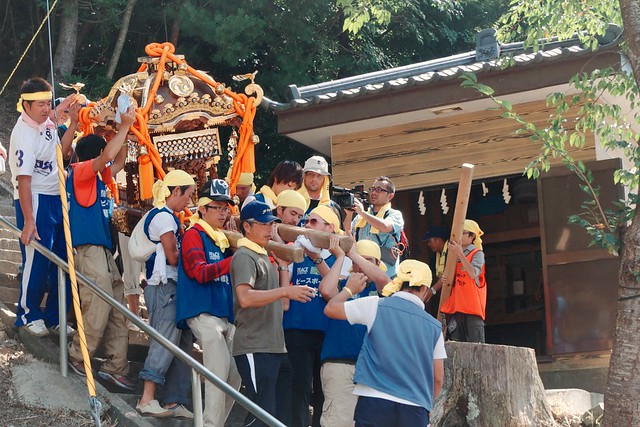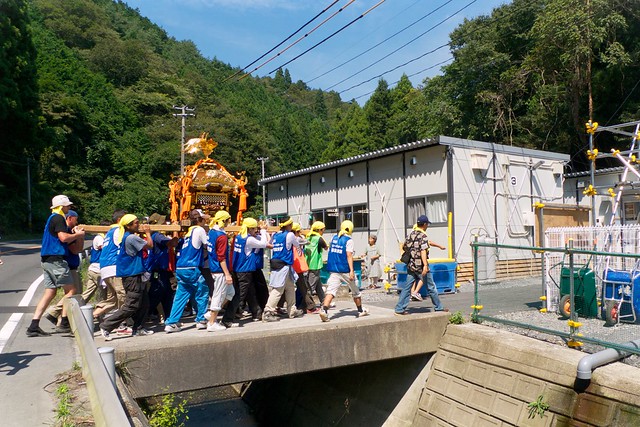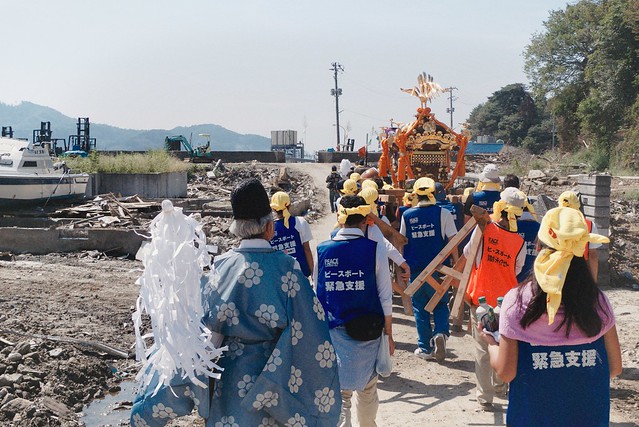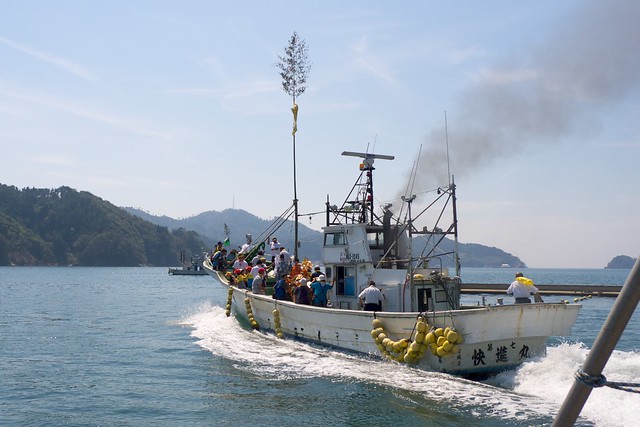matsuri
As I mentioned previously (here and here) our main volunteering task last week was cleaning up a shrine. The annual festival in the little fishing village of Oginohama was scheduled for the Friday but there were not enough people left in the village to put on the event. So Peaceboat took on the task. They cleaned in the shrine building, around the building, all 200 steps and their verge and also the area at the bottom of the stairs where Peaceboat volunteers cooked lunch afterwards. James I and felt that with so many volunteers and 4 days, we could have cleaned 4 shrines. So we worked hard in the hope of getting a different task later in the week. But that wasn't how it worked. Instead, they just cleaned unnecessarily deeper! Actually our small team of 5 was the only one that happened to go to the shrine all 5 days (4 days cleaning plus the matsuri itself), so that was a little unfortunate. Apart from the over-manning, which actually is a typical Japanese approach to a problem, the goal was reasonable enough. Most of the sludge has now been removed and building deconstruction must be done by professionals. Meanwhile the surrounding desolation must be very depressing for those living there, so getting the shrine back in use and putting on a meaningful and fun event felt right.
Peaceboat also overmanned the matsuri itself. It would have been nicer had the locals (about 35 attended) not been outnumbered by volunteers! Here are some photos.
First we went up to the shrine building where an hour long service of the priest singing was held. Apparently the goddess protects the village from the sea and keeps safe the boats and fishermen and that sort of thing. We think she should be sacked. Then the mikoshi was taken from its little shed and taken to visit all the houses in the village. I suppose this is to symbolise the goddess visiting and blessing the village.
The mikoshi is taken from the shed. It is quite heavy and naturally only men can carry it. I suppose that otherwise their willies would shrink away to nothing.

Visiting the houses in the village. Almost everyone (about 10 families?) seems to be living in these temporary houses a couple of minutes walk up the hill from the shrine. Even James could not carry the whole mikoshi himself, so, being a foot taller than most, had to adopt a different carrying style from the others (that's him at the back).

We walked through the "old village", empty lots, rubble, diggers. I usually despise shinto for its encouragement of superstition among the population, but this bit was actually rather moving. The guy with the black hat and prayer stick is the priest.

Then on to the fishing boats. The mikoshi was taken out into the bay where a twig was thrown and some sake was poured into the sea. The volunteers not involved in mikoshi carrying, followed on 3 other boats, where some fun swooping around and racing went on.





0 comments:
Post a Comment